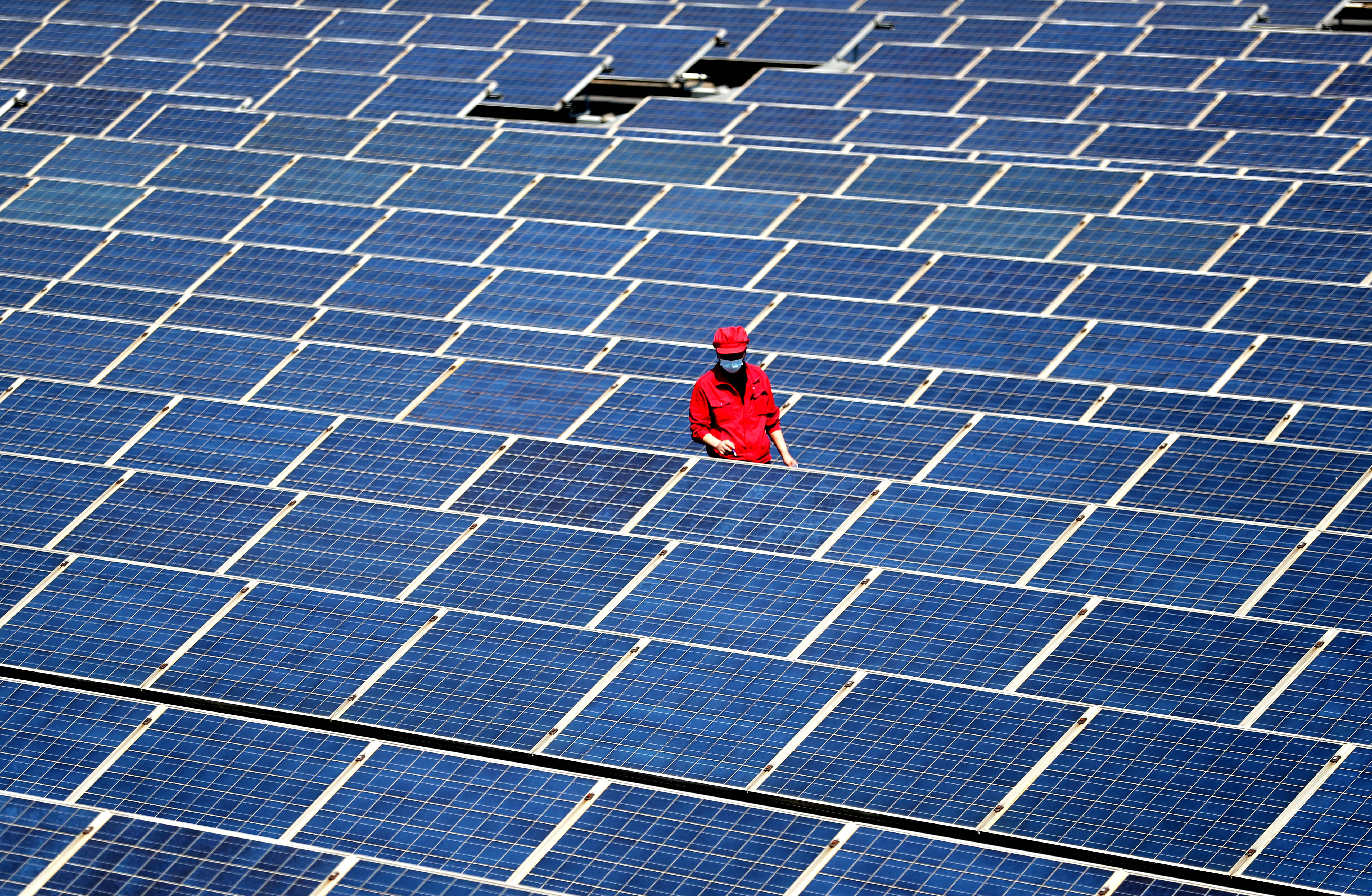
A technician inspects a roof photovoltaic power generation project in Qingdao,
Shandong province. (PHOTO: VCG)
By LI Linxu
An ambitious plan to develop energy technologies that propel the country's green growth and high-quality development was released by the National Energy Administration (NEA), in conjunction with the Ministry of Science and Technology last month.
Energy is critical to a country's safety and development. To achieve goals of carbon peaking and carbon neutrality, the digital transformation of the energy sector has brought both opportunities and challenges to the energy revolution and high-quality energy development, said the plan, adding that technology holds the key to the energy revolution as it will help create future energy.
The document, titled the Five-year Plan for Technological Innovation in the Energy Sector, lays out the goals, tasks and measures for the following few years.
It puts forward a series of key goals to be reached by 2025, including establishing new power systems to accommodate more renewable energy resources, developing nuclear power in a safe way, promoting clean, low-carbon and efficient development and utilization of fossil-fuel energy, and creating a more digitized and smart energy sector.
Through technology innovation, breakthroughs are expected to be achieved in new energy technologies, disruptive energy technologies and major energy technological equipment, said an NEA official during a media briefing.
In the field of advanced and renewable generation and utilization technologies, the plan will focus on a more efficient, cost-effective and reliable supply of renewables such as wind, solar, biomass and geothermal energy.
To promote the integrated development of hydrogen and renewable energies, the plan pledges to tackle the key technologies of high-efficient hydrogen production, storage, charging and fuel cells.
In the field of new power systems, the plan calls for making key technology breakthroughs in strategic and prospective power grids, so as to support the construction of an advanced power grid adaptive to the connection of large-scale renewable energy sources and distributed energy sources.
Meanwhile, it also calls for making key technology breakthroughs in major equipment in order to meet the energy storage needs in various application scenarios of energy systems.
With regard to nuclear energy technologies, the plan proposes to conduct the optimization research of the third generation nuclear energy technologies, enhance strategic and prospective nuclear energy technology innovations, conduct key technology research in radioactive waste disposal and nuclear power plant long-term operation, and promote sustainable development in the entire industrial chain.
In the field of digitalization technologies, the plan proposes piloting regional smart energy systems and applying digital and smart technologies to such traditional energy sectors as coal mining, gasoline production, power plants and power grids.
To ensure the orderly running of R&D, the plan sets forth a series of measures, including establishing innovation coordination mechanisms, improving innovation platform systems, highlighting the role of enterprises, increasing investment in innovation, and enhancing international cooperation.
The trio will conduct a series of experiments in fields such as life science, fluid physics, combustion science and materials science. Notably, this is the first time that fruit flies have been taken on a Chinese space mission as experimental subjects. What made scientists choose fruit flies? What experiment will they undergo?
